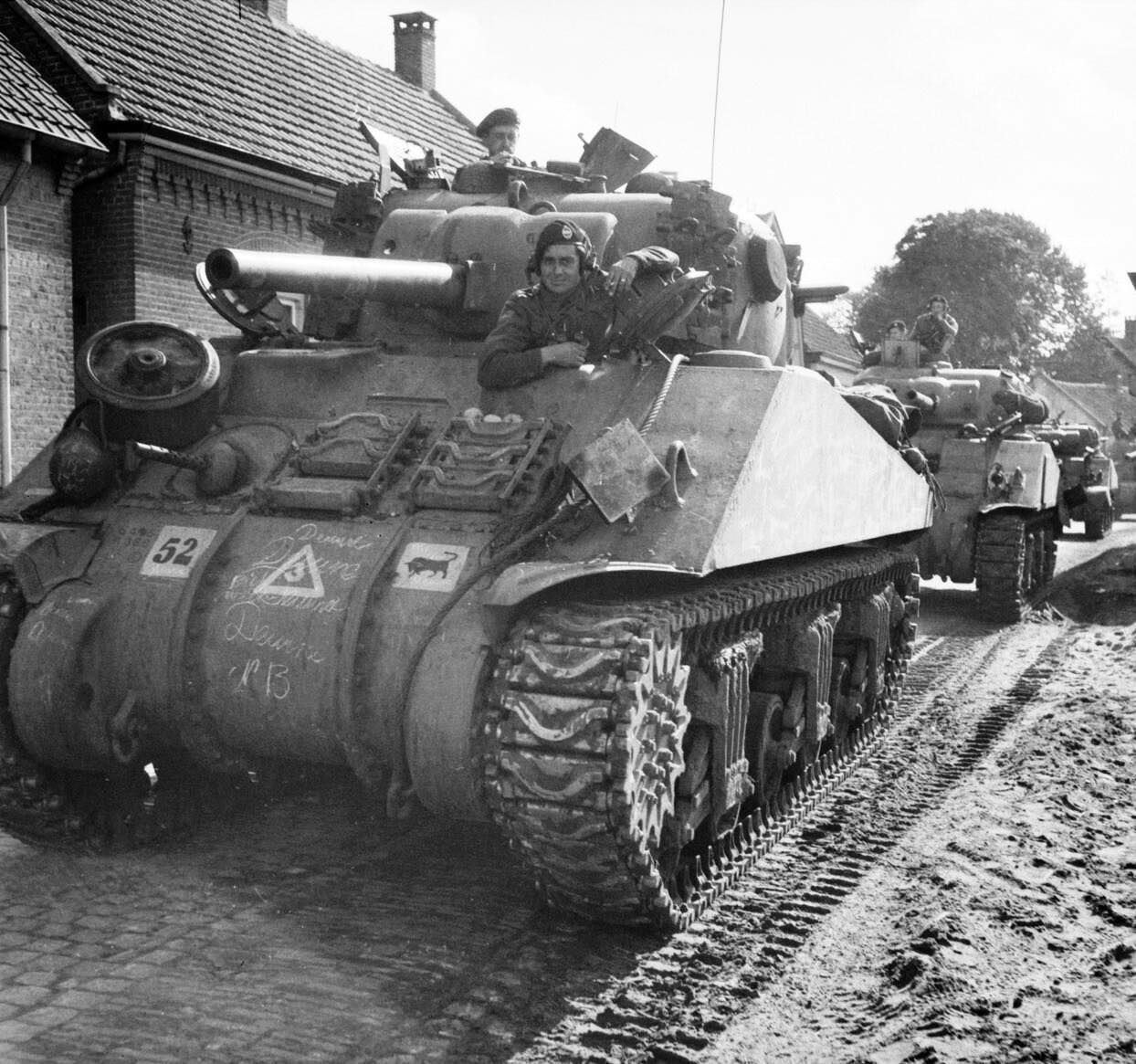I think Japan still would have invaded the Soviet Union though, if the Second Sino-Japanese War continued (the oil embargo only really happened once they invaded Indochina).
Other than that I agree with you. That would be curious alternate reality.
Stuart VIs (M5A1 Light Tanks) with the British 2nd Armoured Battalion Irish Guards, Guards Armoured Division, during Operation Market Garden - September 1944
LIFE Magazine Archives - George Rodger Photographer WWP-PD

Cromwell tanks of 2nd Welsh Guards crossing the bridge at Nijmegen, 21 September 1944.
Image: IWM (B 10172)
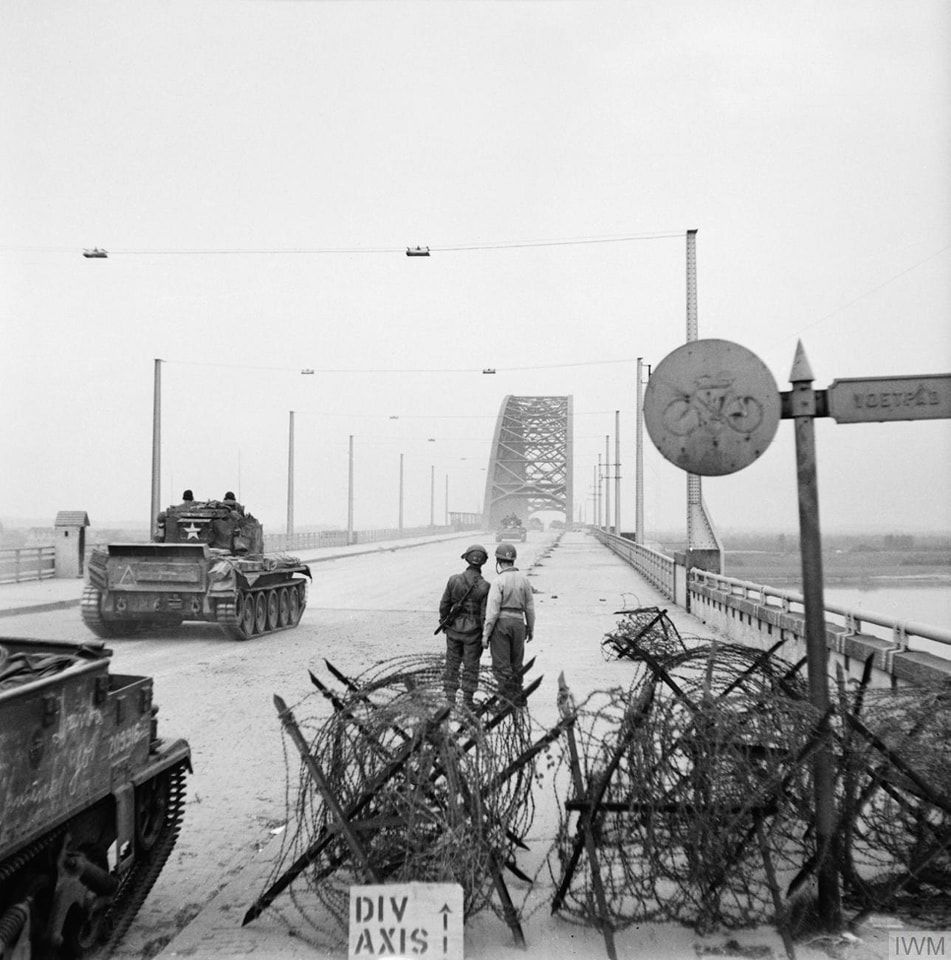
Today where I live is the 80th anniversary of the liberation of Rimini, a town on the Adriatic coast of Italy. Its liberation was part of the broader Operation Olive, an attempt by the Allies to break through the Axis-held Gothic Line in Northern Italy. While they experienced multiple tactical victories, the Germans were able to hold out long enough to prevent a decisive breakthrough until winter came. It would not be until 1945 that the Allies would break through the Gothic Line and liberate the rest of Italy.
Rimini was actually liberated by a Greek unit fighting with the British, one major highlight in the Greek military history of the war following the country’s fall in 1941.
Market Garden commemoration day here, with 99-year old veteran Geoff Roberts.
It’s in Dutch, but the video says it all.
17-pdr anti-tank gun of the 21st Anti-Tank Regiment, Guards Armoured Division, covering the approaches to the “Waalbrug” Waal River Bridge in Nijmegen Netherlands - September 21, 1944
Note French Hotchkiss Mle 1914 MG on a tripod and Bren LMG in the foreground
IWM - Midgley, A. N. (Sgt) Photographer
IWM B 10171
17-pdr anti-tank gun of the 21st Anti-Tank Regiment, Guards Armoured Division, covering the approaches to the “Waalbrug” Waal River Bridge in Nijmegen Netherlands - September 21, 1944
Note French Hotchkiss Mle 1914 MG on a tripod and Bren LMG in the foreground
IWM - Midgley, A. N. (Sgt) Photographer
IWM B 10171
British 11th Armoured Division vehicles and a Sexton named “HANNIBAL” of 13th (HAC) Regiment Royal Horse Artillery during the advance into the Netherlands - September 22, 1944
IWM - Laing (Sgt)
IWM B 10244
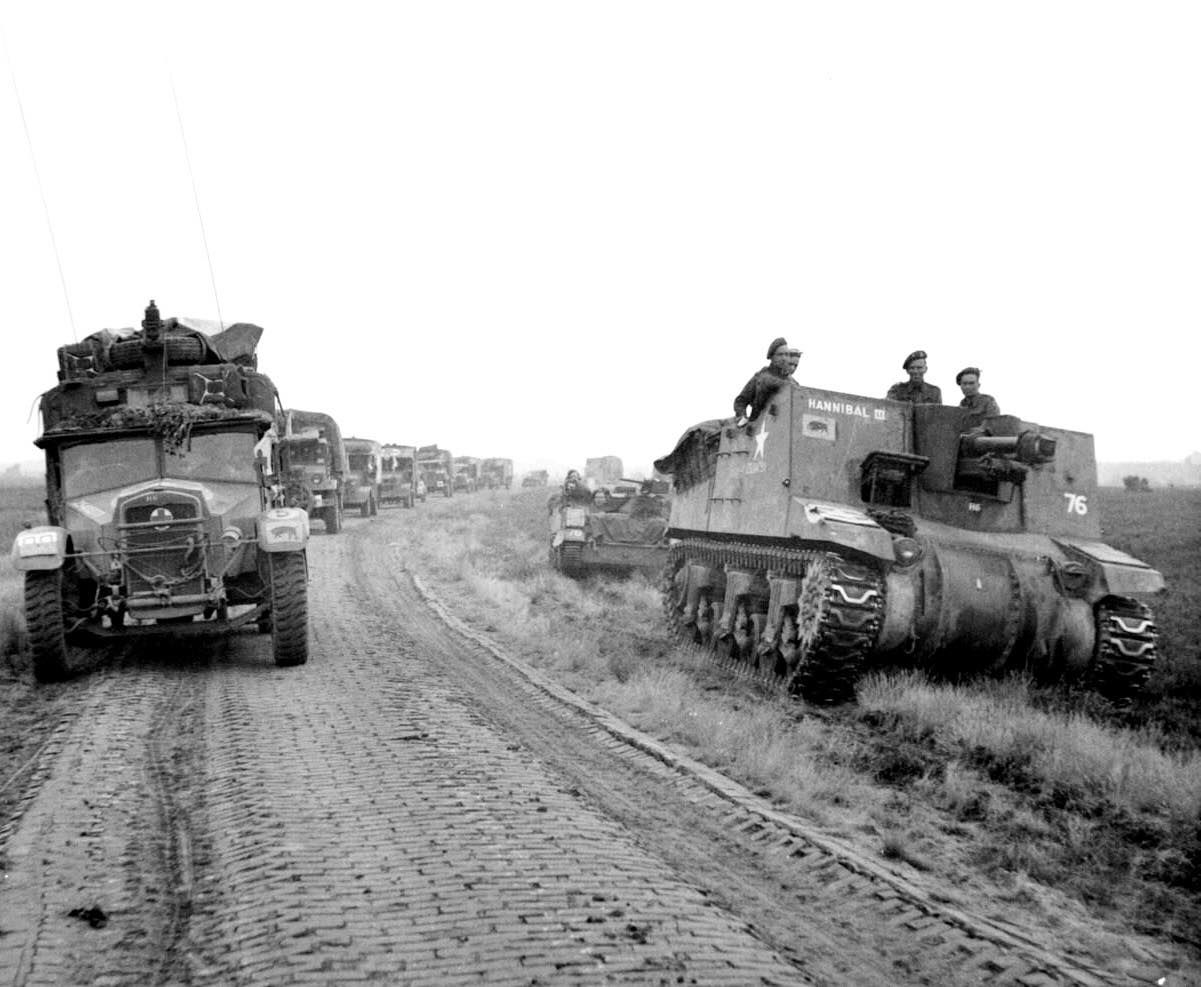
German Army Grenadiers in a ditch / trench near Arnhem Netherlands during Operation Market Garden - September 1944
Bundesarchiv Bild 183-S73822
Pospesch Photographer
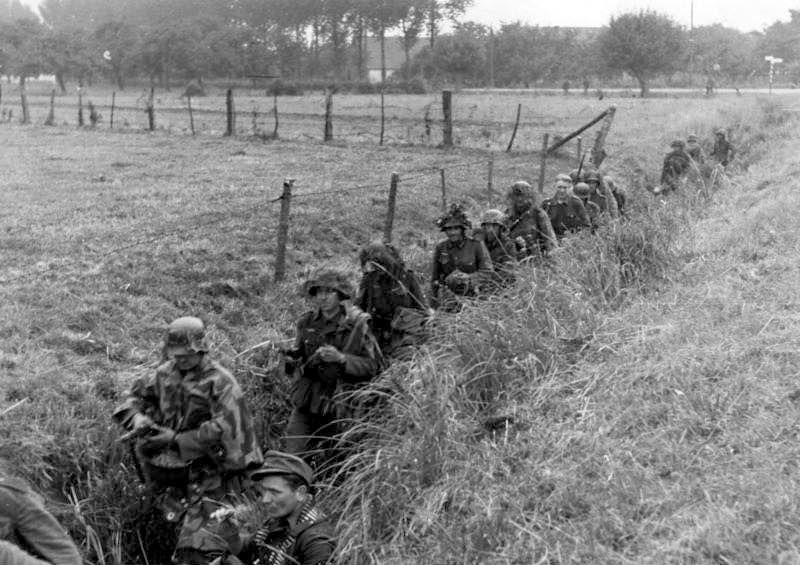
British Paratrooper with an M1 Carbine in Oosterbeek, Netherlands - September 23, 1944
The British Military saw limited use of the M1 & M1A1 Carbines after 1943, when they were found to be handy weapons by the SAS, SOE, Airborne troops, and other specialist units.
IWM - Lewis (Sgt) Photographer
IWM BU 1122

Nice.
Nice :)
Long time since i’ve seen a brick paved road. Most of the small farm towns had them when i was a kid.
Tedious job. Did a sidewalk but never a road lol
I like seeing these. Good job :)
British Sherman V (M4A4) and infantry of the 11th Armoured Division cross a bailey bridge over a canal in Someren Netherlands - September 24, 1944
Of note are the fittings on the Sherman for a Canadian Indestructible Roller Device (CIRD).
The CIRD consisted of two arms attached to the side of the tank, each supporting a heavy roller. The roller was suspended in such a way that it would jump in the air and rotate in an arc round the arm when a mine was detonated, thus reducing the chance of damage.
Because of this construction, it was more durable than the Crab on which the chains could wear out or were blown off.
Thanks Pierre Olivier for his assistance
IWM - Laing (Sgt) Photographer
IWM B 10291
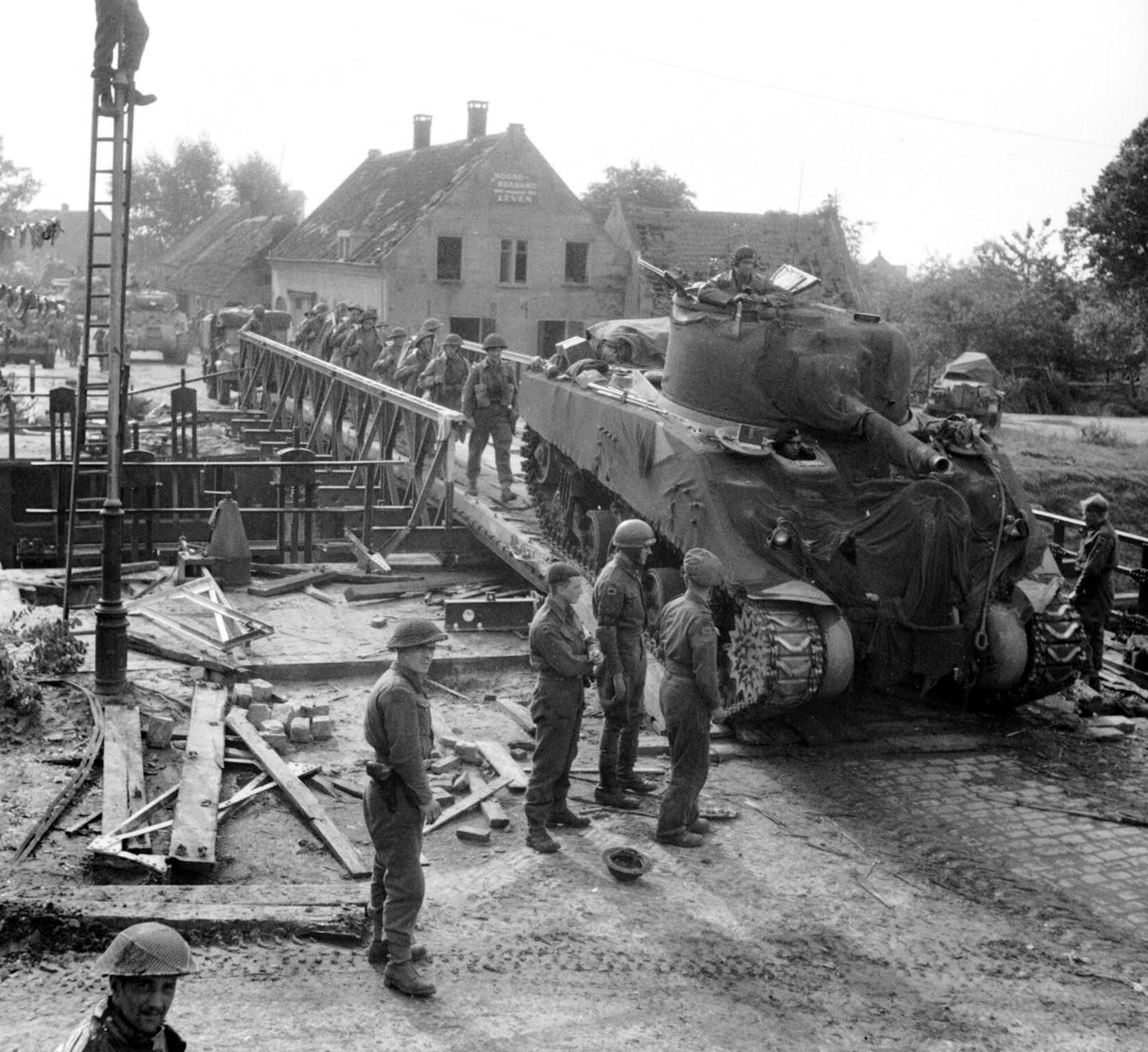
British Personnel chat with a local woman next to a Sherman III (M4A2) in Cava de’ Tirreni, Italy - September 24, 1943
IWM - Bowman, C. (Sgt) Photographer
IWM NA 7101
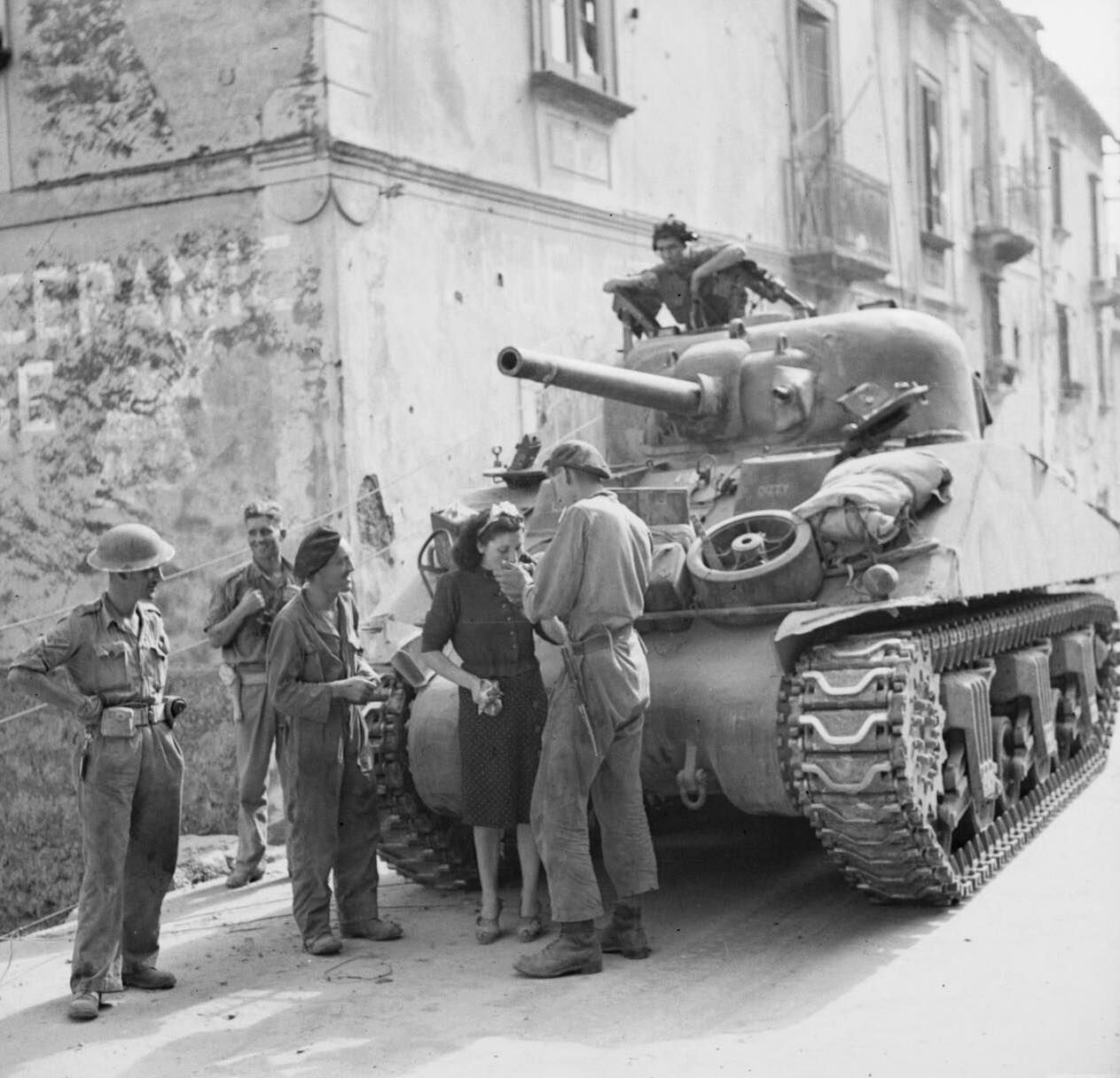
British Universal Carriers, Sherman Tanks, and Infantry of 8 Corps in Asten, Netherlands - September 24, 1944
IWM - Laing (Sgt) Photographer
IWM B 10298
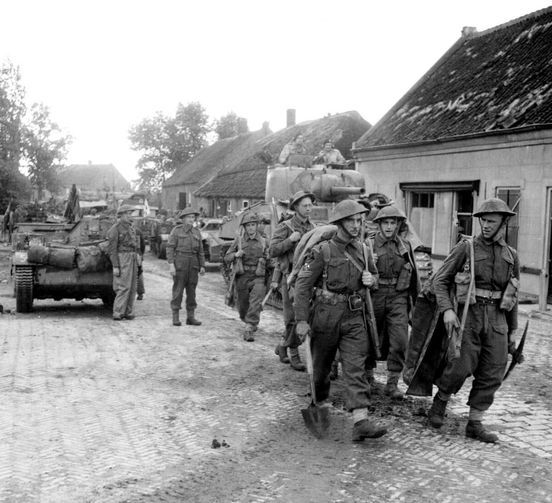
Cool!
Holy acrophobia batman ! Look at that dude on the ladder lol
The brits look like a pack wolves giving that gal a cigarette :)
Damaged Japanese Heavy Cruiser Myōkō in Singapore four days after surrendering to Royal Navy units, tied up alongside are the submarines I-501 (ex U-181) and I-502 (ex U-862) - September 25, 1945
Myōkō had part of her stern blown off during a torpedo attack by the submarine USS Bergall SS-320 on December 13, 1944. With only one operating propeller and no steering she was towed to Singapore, however there were insufficient materials for the repairs and Myōkō was utilized as a floating anti-aircraft battery until the end of the war.
Kriegsmarine U-Boats U-181 & U-862 had been part of the “Monsun Gruppe” operating from Penang in the Indian Ocean. In May 1945 both were in Singapore Harbor where they were seized by the Japanese due to Germany’s surrender and re-designated I-501 (U-181) & I-502 (U-862).
Myōkō, I-501/U-181, and I-502/U-862 were towed to the Strait of Malacca in 1946 and scuttled off of Port Swettenham, Malaya (near present-day Port Klang, Malaysia).
IWM - Trusler, C (Lt) Photographer
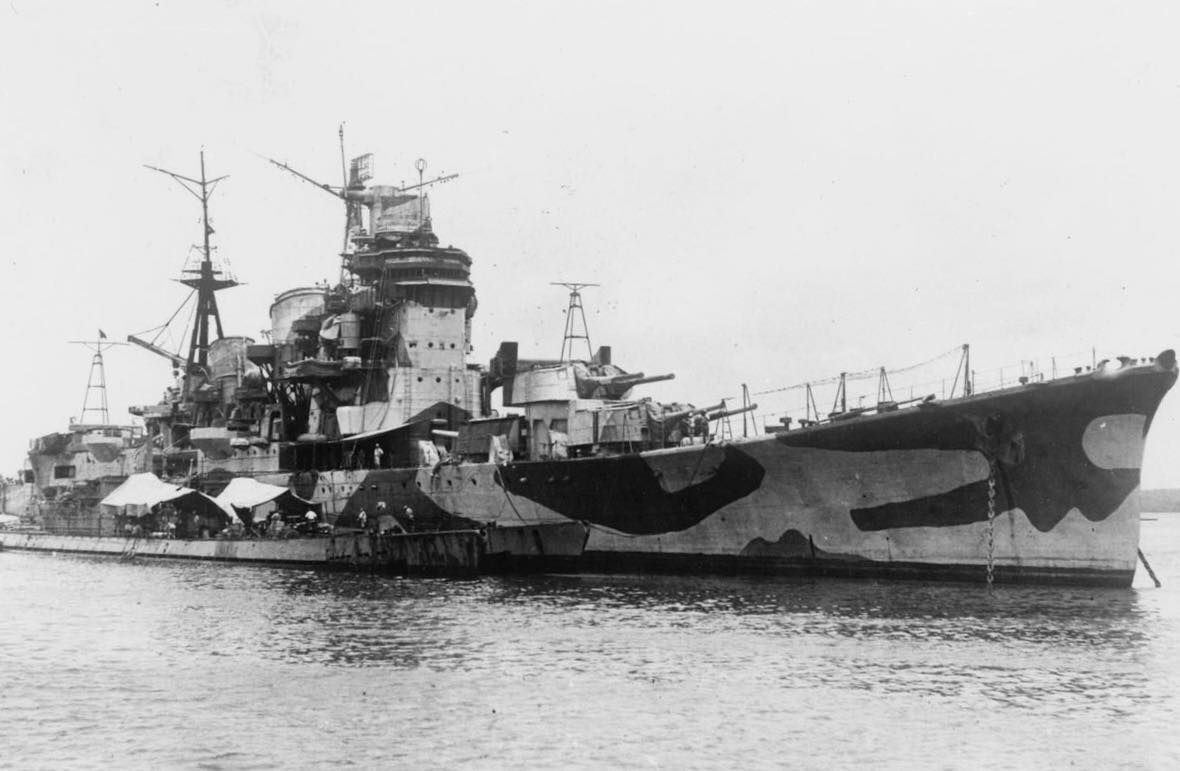
Good to know.
British Sexton SPGs of the 11th Armoured Division pass through Deurne during the advance towards Gemert in the Netherlands - September 26, 1944
IWM - Laing (Sgt) Photographer
IWM B 10363
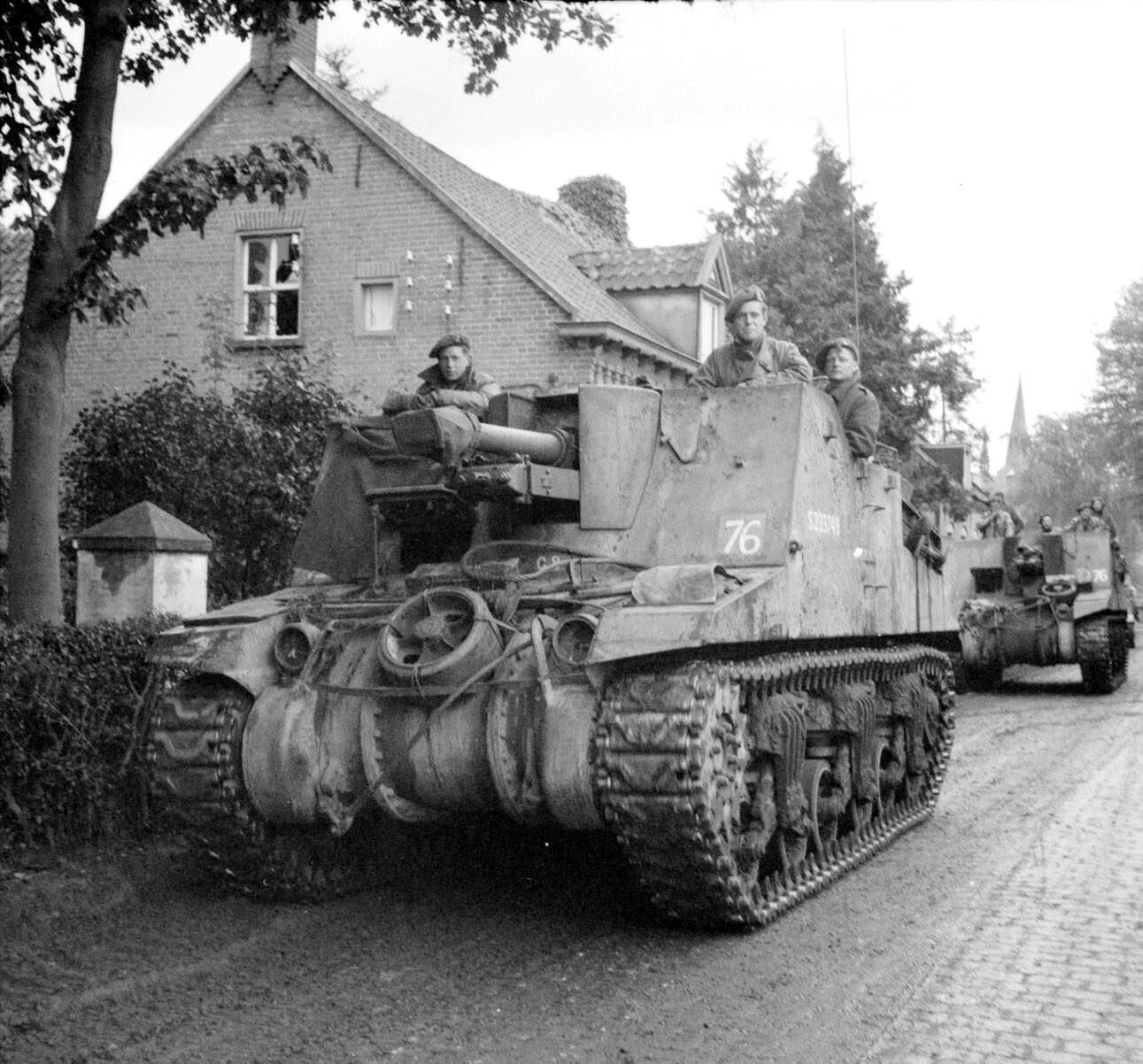
British Sherman Vs (M4A4s) of the 3rd Royal Tank Regiment, 11th Armoured Division, advance through Deurne, Netherlands - September 26, 1944
IWM - Laing (Sgt) Photographer
IWM B 10359
